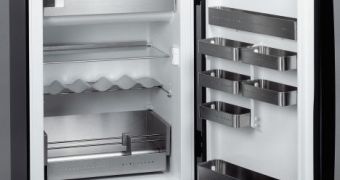The US Department of Energy (DOE) has issued final energy efficiency standards for home refrigerators and freezers, which is expected to deliver more than $200 in electricity bill savings for the typical consumer over the lifetime of the refrigerator.
Nationally, consumers are expected to save more than $21 billion on their energy bills through 2043 as a result of the new standards. Also efficiency is expected to improve by about 25 percent until 2014.
The efficiency standards finalize the proposed consensus standards agreed to by the Association of Home Appliance Manufacturers (AHAM), more than 25 individual refrigerator manufacturers, and some of the nation’s leading consumer and environmental advocacy groups.
The standards are set to go into effect three years after publication in the Federal Register.
“What’s so remarkable is that even as the size of American refrigerators has increased and more features have been added, the historical purchase prices have come down and we are all saving money on our electricity bills every month,” said Secretary Chu.
According to the Department’s analysis, the standards announced today will ultimately save enough electricity each year to power 3.4 million homes, about the same number of homes in the entire state of Virginia.
The standards will also avoid more than 340 million metric tons of carbon dioxide emissions over 30 years.
“DOE's action today, which was required by law, is based on the consensus agreement reached by stakeholders which balances energy savings, consumer choice and manufacturer impact. We applaud DOE for its work and continue to urge both DOE and EPA to carefully balance implementation of mandatory standards and voluntary programs such as ENERGY STAR,” said Joseph M. McGuire, president of the Association of Home Appliance Manufacturers.
Since the first standards were set in the 1970s, the energy needed to power home refrigerators has decreased by more than two-thirds, while at the same time, costs have been reduced, storage space has increased, and more and more features have been added.

 14 DAY TRIAL //
14 DAY TRIAL //